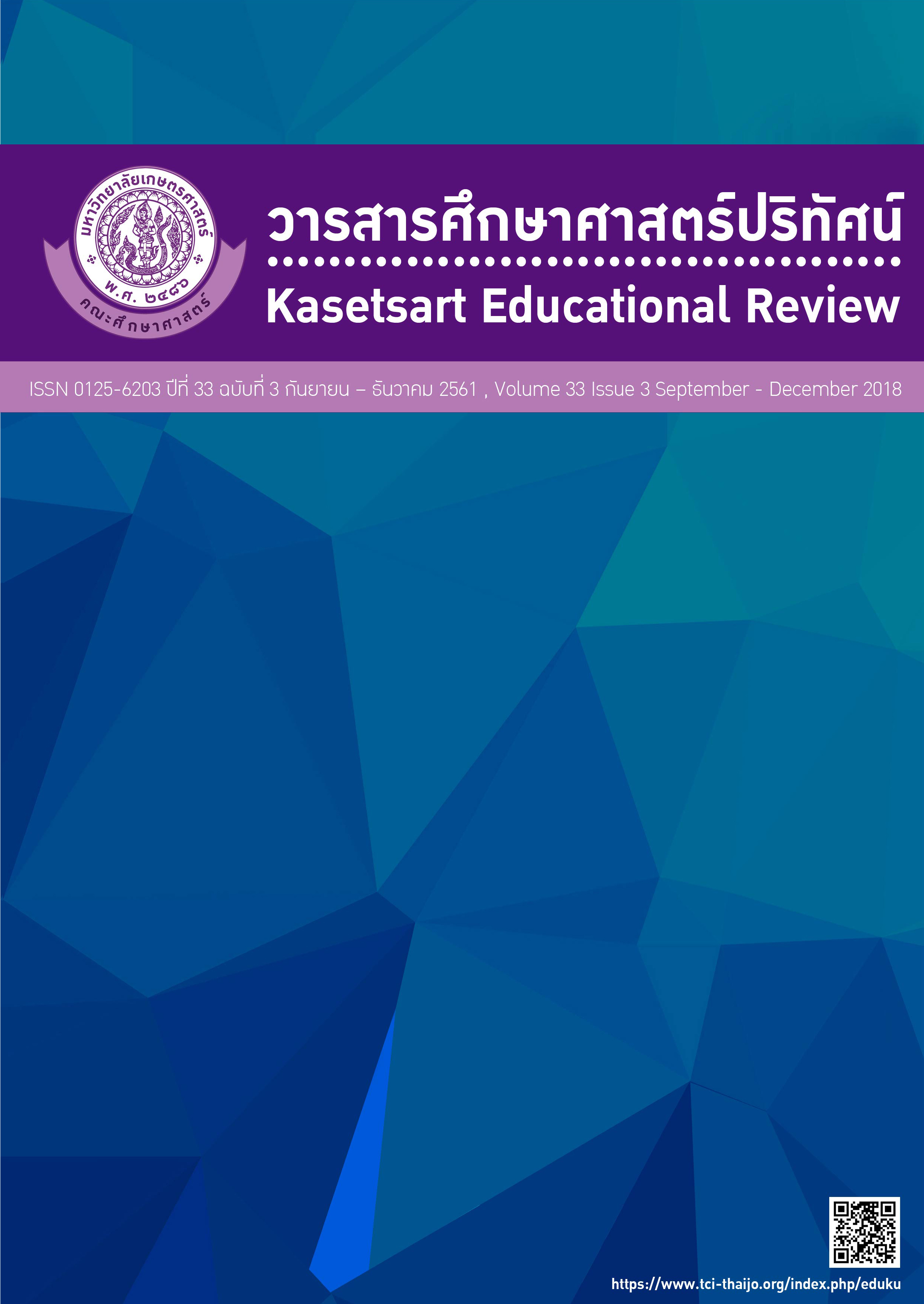ความสัมพันธ์ระหว่างแรงจูงใจ ความหมายมั่น และผลสัมฤทธิ์ทางการเรียนของนักเรียนชั้นมัธยมศึกษาปีที่ 3
คำสำคัญ:
แรงจูงใจ, ความหมายมั่น, ผลสัมฤทธิ์ทางการเรียน, นักเรียนกลุ่มเสี่ยง, ชั้นมัธยมศึกษาปีที่ 3บทคัดย่อ
การวิจัยครั้งนี้มีวัตถุประสงค์เพื่อ 1) พัฒนาและหาความตรงของเครื่องมือวัดแรงจูงใจ และความหมายมั่นของนักเรียนชั้นมัธยมศึกษาปีที่ 3 2) ศึกษาผลของแรงจูงใจและความหมายมั่นที่มีต่อผลสัมฤทธิ์จากการเรียนของนักเรียนชั้นมัธยมศึกษาปีที่ 3 และ 3) เปรียบเทียบจิตมิติจากการตอบแบบสอบถามตามความหมายมั่นของนักเรียนกลุ่มเสี่ยงทางการเรียน และพฤติกรรมกับการรายงานของครูผู้สอน ข้อมูลจากผู้ตอบจำนวน 227 คน ที่รวมนักเรียนกลุ่มเสี่ยงไว้ด้วย 38 คน นำมาวิเคราะห์องค์ประกอบเชิงสำรวจ วิเคราะห์ตัวแบบสมการโครงสร้างและการทดสอบค่าที
ผลการวิจัยพบว่า เครื่องมือวัดแรงจูงใจและความหมายมั่นของนักเรียนชั้นมัธยมศึกษาปีที่ 3 มีความสอดคล้องภายในดี แรงจูงใจมีโครงสร้างพหุประกอบด้วยห้าปัจจัย ได้แก่ ภาวะอิสระ สมรรถนะ สัมพันธภาพ การรับรู้ความสามารถในตน และเป้าหมายที่รอบรู้ ส่วนแบบสอบถามความหมายมั่นทั้ง 15 ข้อคำถาม มีความตรงเชิงโครงสร้างตามทฤษฎี และผลการวิจัยก่อนหน้านี้ประกอบด้วยสี่ปัจจัย ได้แก่ ความหมายมั่นเชิงพฤติกรรม อารมณ์ ปัญญา และการสร้างความรู้ ตัวแบบความสัมพันธ์เชิงสาเหตุทั้งสามตัวแบบสนับสนุนว่า แรงจูงใจและความหมายมั่นมีอิทธิพลต่อผลสัมฤทธิ์ทางการเรียน และสุดท้ายจิตมิติตามทัศนะของครู และการรับรู้เกี่ยวกับความหมายมั่นในการสร้างความรู้ของนักเรียนสอดคล้องกัน ซึ่งมีรายละเอียดและข้อเสนอแนะเพื่อการแนะแนวการศึกษาในโรงเรียนต่อไป
เอกสารอ้างอิง
Deci, E.L., and Ryan, R.M.(Eds.) 2002. The handbook of self-determination research. Rochester, NY: University of Rochester Press.
Dotterer, A.M., and Lowe, K. 2011. Classroom context, school engagement, and academic achievement in early adolescence. Journal of Youth Adolescence. 40: 1649-1660.
Dumsuwarn , W. (2016). Engagement. Vocational Education Today. 2(2),25-27 (in Thai)
Fredricks, J.A., Blumenfeld, P.C., and Paris, A.H. 2004. School engagement: potential of the
concept, state of the evidence. Review of Educational Research. 74: 59-109.
Hart, S.R., Stewart, K., and Jimerson, S.R. 2011. The student engagement in school questionnaire (SESQ) and the teacher engagement report form-new (TERF-N): Examining the preliminary evidence. Contemporary School Psychology. 15: 67-79.
Organisation for Economic Co-operation and Development 2002. Reading for change: Performance and engagement across countries: results from PISA 2000, Paris.
Reeve, J. 2012. A self-determination theory perspective on student engagement. In S.L. Christenson, A. Reschly, and C.Wylie (Eds.) Handbook of research on student engagement. (Chpt.7, pp. 149-172) New York: Springer.
Reeve, J., and Tseng, C.-M. 2011. Agency as a fourth aspect of students’ engagement during learning activities. Contemporary Educational psychology. 36: 257-267.
Veiga, F.H. 2012. Proposal to the PISA of a new scale of students’engagement in school. Procedia-Social and Behavioral Sciences. 46: 1224-1231.
Wah, L. 1999. Engaging employees a big challenge. Management Review. 88: 10
Wellborn, J.G. 1991. Engaged and disaffected action: The conceptualization and
measurement of motivation in the academic domain. Unpublished doctoral
dissertation, University of Rochester, Rochester.
ดาวน์โหลด
เผยแพร่แล้ว
ฉบับ
ประเภทบทความ
สัญญาอนุญาต
บทความทุกบทความเป็นลิขสิทธิ์ของวารสารคณะศึกษาศาสตร์ มหาวิทยาลัยเกษตรศาสตร์ วิทยาเขตบางเขน
วารสารศึกษาศาสตร์ปริทัศน์ (Kasetsart Educational Review)






